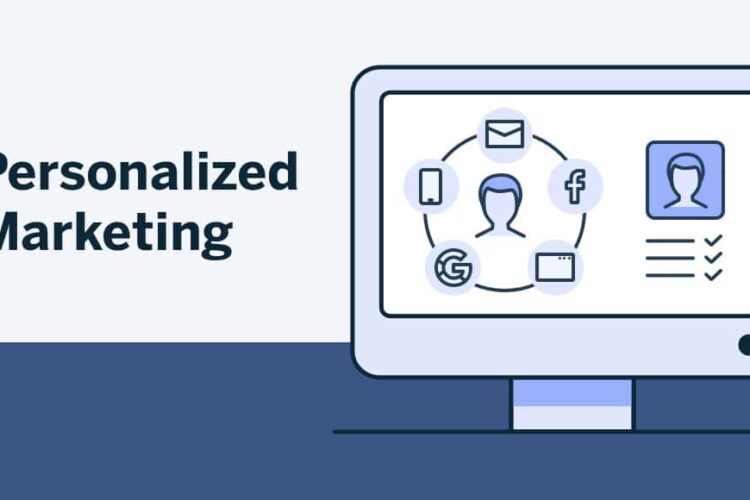
I. Introduction to Marketing Personalization
II. Benefits of Personalized Marketing
III. Strategies for Implementing Personalization
IV. Challenges of Personalized Marketing and How to Overcome Them
Hey there! Have you ever noticed how some companies seem to know exactly what you’re looking for? It’s like they can read your mind! Well, that’s not magic – it’s called personalized marketing.
What is Marketing Personalization?
Marketing personalization is the practice of tailoring your marketing efforts to individual customers based on their preferences, behaviors, and interests. It’s all about creating a more personalized experience for your customers, making them feel like you truly understand their needs and wants.
Imagine receiving an email from your favorite clothing brand with recommendations for new items based on your past purchases. Or logging into a website and seeing products that match your browsing history. That’s personalized marketing in action!
By using data and technology, companies can analyze customer behavior and preferences to deliver targeted messages and offers. This not only helps businesses increase sales and customer loyalty, but it also enhances the overall customer experience.
So, why should you care about marketing personalization? Well, let’s dive into the benefits of this powerful strategy!
Benefits of Personalized Marketing
Hey there! Welcome to the wonderful world of personalized marketing. Today, we’re going to talk about all the awesome benefits that come with tailoring your marketing efforts to suit the unique preferences and needs of your customers. So, sit back, relax, and let’s dive in!
1. Enhanced Customer Experience
When you personalize your marketing messages, you’re showing your customers that you care about them as individuals. By catering to their specific interests and preferences, you’re creating a more engaging and relevant experience for them. This can lead to increased customer satisfaction and loyalty, as well as higher retention rates.
2. Increased Conversion Rates
Personalized marketing allows you to deliver the right message to the right person at the right time. By targeting your audience with content that resonates with them on a personal level, you’re more likely to capture their attention and drive them to take action. This can result in higher conversion rates and ultimately, increased sales and revenue for your business.
3. Improved ROI
When you tailor your marketing efforts to suit the unique preferences of your audience, you’re more likely to see a positive return on your investment. By delivering targeted messages to the right people, you’re maximizing the impact of your marketing dollars and driving higher levels of engagement. This can help you optimize your marketing budget and achieve a better ROI for your campaigns.
4. Better Data Insights
Personalized marketing allows you to gather valuable data about your customers’ preferences, behaviors, and buying patterns. By tracking the performance of your personalized campaigns, you can gain valuable insights into what resonates with your audience and what doesn’t. This can help you refine your marketing strategies and make more informed decisions moving forward.
5. Competitive Advantage
In today’s crowded marketplace, personalized marketing can help you stand out from the competition. By offering a more personalized and tailored experience to your customers, you’re setting yourself apart as a brand that truly understands and cares about its audience. This can help you build stronger relationships with your customers and position yourself as a trusted and reliable source in your industry.
So, there you have it! Personalized marketing offers a host of benefits for businesses looking to connect with their customers on a deeper level. By enhancing the customer experience, increasing conversion rates, improving ROI, gaining better data insights, and gaining a competitive advantage, personalized marketing can help you take your business to the next level. So why wait? Start personalizing your marketing efforts today and reap the rewards!
Strategies for Implementing Personalization
So, you’ve decided to dive into the world of personalized marketing – congrats! Now, you might be wondering, “How exactly do I go about implementing this strategy?” Well, fear not, because I’m here to guide you through some effective strategies that will help you tailor your marketing efforts to your audience in a meaningful way.
1. Understand Your Audience
The first step in personalization is to truly understand who your audience is. Take the time to conduct thorough research and gather data on your target demographic. What are their preferences, interests, and pain points? The more you know about your audience, the better equipped you’ll be to create personalized marketing campaigns that resonate with them.
2. Segment Your Audience
Once you have a good understanding of your audience, it’s time to segment them into smaller, more targeted groups. By dividing your audience based on factors like demographics, behavior, or preferences, you can create more personalized messages that speak directly to their needs and interests. This targeted approach can significantly increase the effectiveness of your marketing efforts.
3. Use Personalized Content
One of the key components of personalized marketing is creating content that is tailored to individual consumers. This can include personalized emails, product recommendations, or even personalized landing pages. By delivering content that is relevant and valuable to each individual, you can build stronger connections with your audience and drive better results.
4. Leverage Automation and AI
Implementing personalization at scale can be a daunting task, but thankfully, there are tools and technologies available to help streamline the process. Consider using marketing automation platforms or AI-powered tools to deliver personalized messages across multiple channels in a more efficient and effective manner. These tools can help you track customer interactions, analyze data, and deliver personalized content in real-time.
5. Test and Optimize Your Campaigns
Personalization is not a one-size-fits-all approach, so it’s important to constantly test and optimize your campaigns to ensure they are resonating with your audience. Use A/B testing to experiment with different messaging, offers, or calls to action, and analyze the results to see what is driving the best results. By continuously refining your approach, you can improve the effectiveness of your personalized marketing efforts over time.
By following these strategies, you can effectively implement personalized marketing campaigns that engage your audience, drive conversions, and ultimately, build stronger relationships with your customers. Remember, personalization is all about connecting with your audience on a more personal level, so don’t be afraid to get creative and experiment with different tactics to see what works best for your brand.
Challenges of Personalized Marketing and How to Overcome Them
While personalized marketing can be incredibly effective in engaging customers and driving conversions, it also comes with its own set of challenges. It’s important to be aware of these obstacles and have strategies in place to overcome them. Let’s dive into some common challenges of personalized marketing and how you can tackle them:
1. Data Privacy Concerns
With the rise of data breaches and privacy scandals, customers are becoming increasingly wary of how their personal information is being used by companies. To overcome this challenge, it’s crucial to be transparent about your data collection practices and ensure that you are following all relevant privacy regulations. Make sure to obtain explicit consent from customers before utilizing their data for personalized marketing purposes.
2. Data Accuracy and Quality
One of the key components of personalized marketing is having access to accurate and high-quality data about your customers. However, data can often be incomplete, outdated, or incorrect, leading to ineffective personalization efforts. To address this challenge, invest in data validation tools and regularly clean and update your customer database. Additionally, consider implementing a data governance strategy to ensure that your data remains accurate and reliable.
3. Personalization at Scale
As your customer base grows, it can become increasingly difficult to personalize marketing messages for each individual. Managing personalized campaigns at scale can be a daunting task, but it’s essential for maintaining a personalized customer experience. To tackle this challenge, leverage marketing automation tools that allow you to segment your audience, create personalized content, and automate the delivery of targeted messages. By automating certain aspects of your personalized marketing strategy, you can ensure consistency and efficiency across all your campaigns.
4. Balancing Personalization with Privacy
While customers appreciate personalized messages that cater to their interests and preferences, there’s a fine line between personalization and invasion of privacy. It’s important to strike a balance between providing relevant content and respecting your customers’ boundaries. Avoid being too intrusive or creepy in your personalization efforts, and always prioritize customer trust and consent. By being mindful of your customers’ privacy concerns, you can build stronger relationships and foster loyalty among your audience.
5. Measuring the Impact of Personalization
One of the challenges of personalized marketing is quantifying its impact and ROI. It can be difficult to attribute conversions and sales directly to your personalization efforts, making it challenging to justify the resources and investments in this strategy. To overcome this challenge, utilize analytics tools to track the performance of your personalized campaigns and measure key metrics such as engagement, conversion rates, and customer retention. By analyzing the data and refining your personalization strategy based on insights, you can demonstrate the value of personalized marketing to your organization.
By addressing these challenges and implementing effective strategies, you can maximize the benefits of personalized marketing and create a more engaging and personalized experience for your customers.





Comments